& Construction

Integrated BIM tools, including Revit, AutoCAD, and Civil 3D
& Manufacturing

Professional CAD/CAM tools built on Inventor and AutoCAD
Save or reuse your Informed Design code block rules, with export or import to an IDC file.
Codeblocks can be imported and exported from a Product definition. Exported information is stored in a file with an IDC extension. The exported file can be used for backup, to revert to a previous version, or to restore accidentally deleted blocks. The IDC file can be imported into another product definition within a different Inventor project, allowing for reuse of already-defined logic.
In this example, code blocks for key parameters are already defined. There are five lines of blocks comprised of two blocks each, resulting in 10 blocks.
To reuse these blocks in another project:
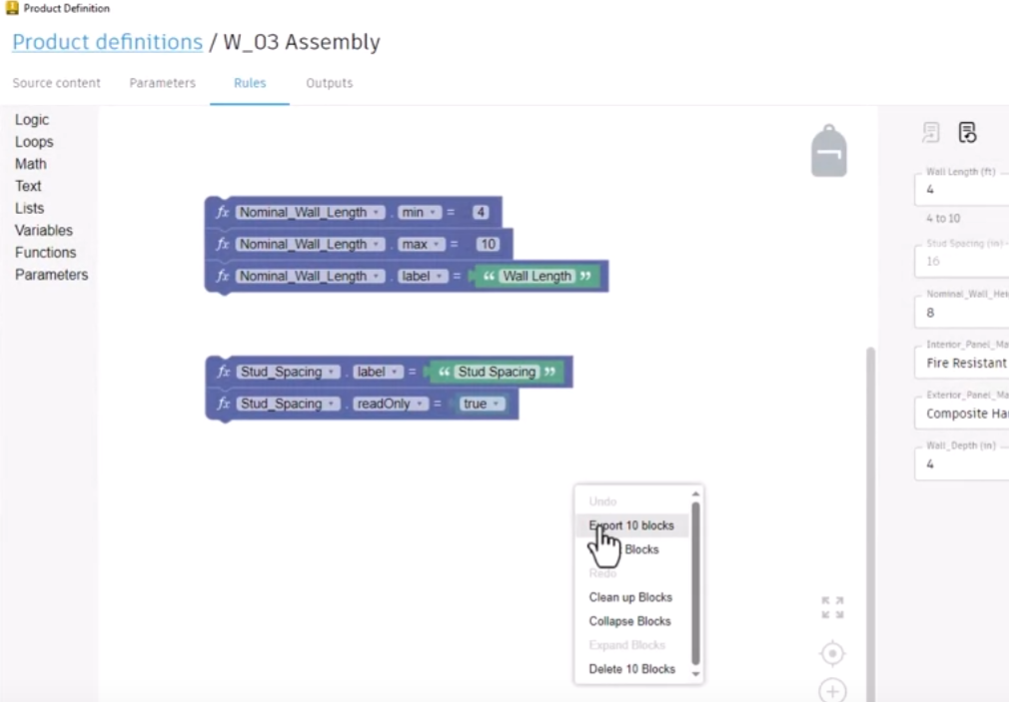
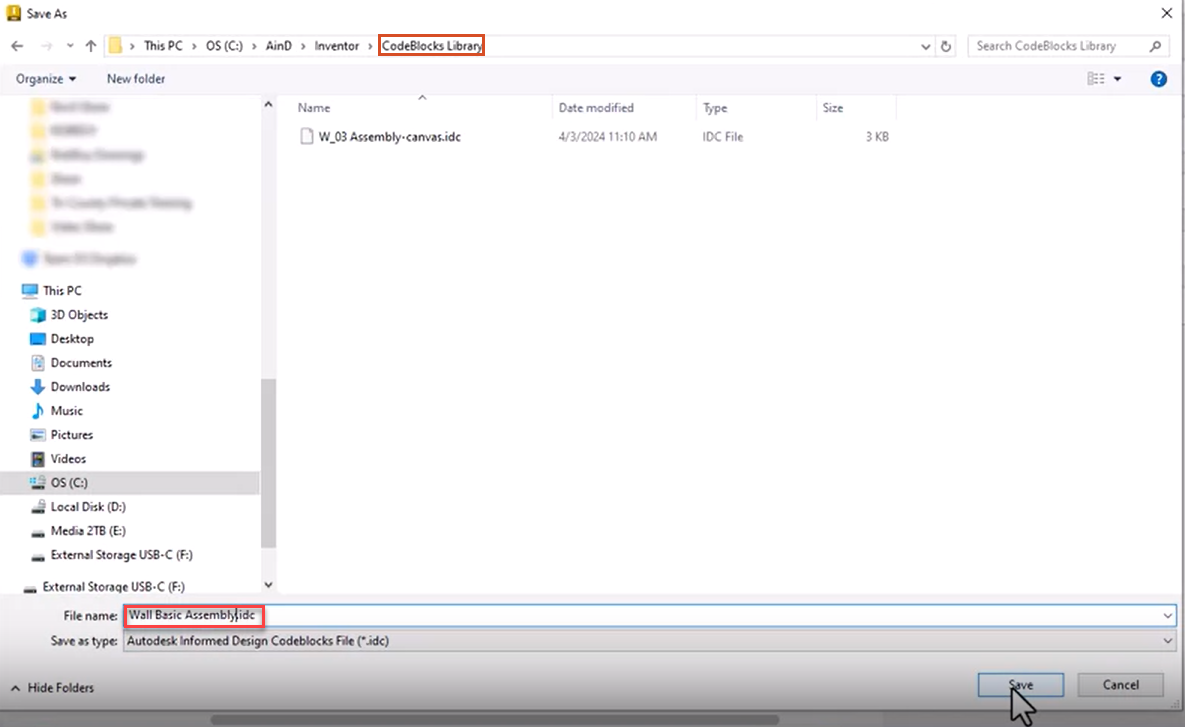
A message confirms that the file was exported successfully.

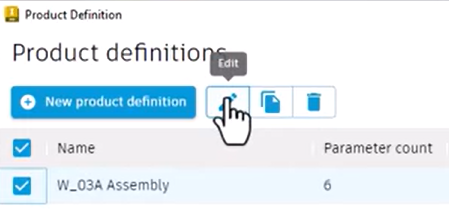
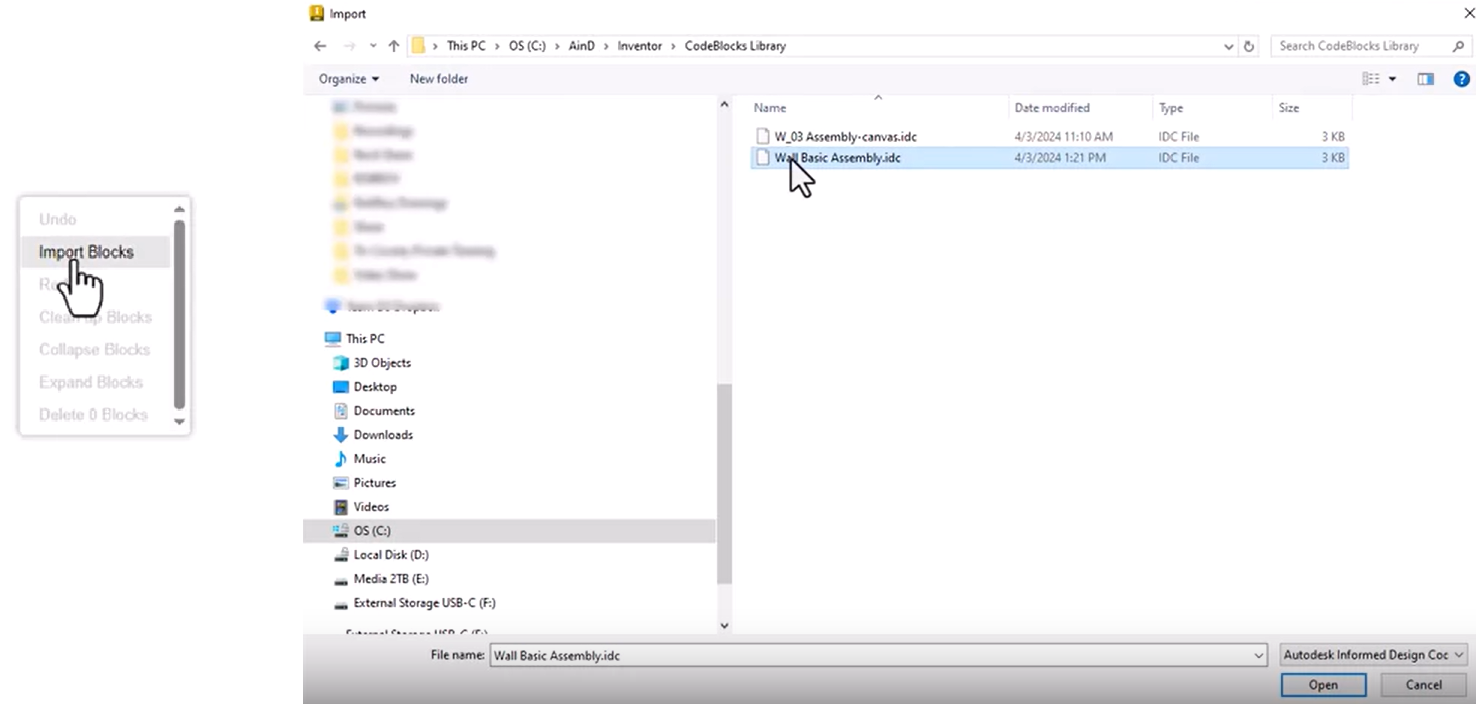
A message confirms that the import was successful, and a comment code block is added to help identify the imported blocks.
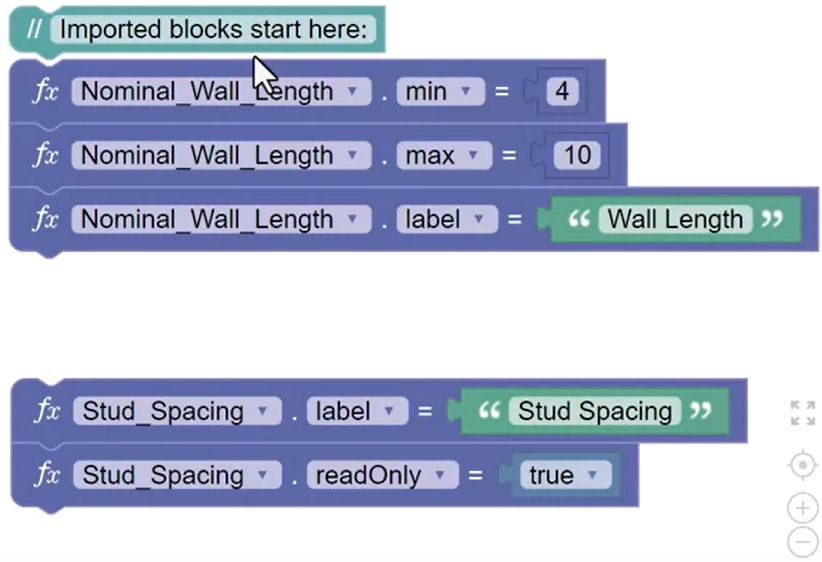
Sometimes imported blocks contain parameters that do not exist in the product definition, variables that already exist, or duplicate functions. To demonstrate how this is handled, a rule with a function, several named variables, and an unused variable called Test_Var are being exported to an IDC file.

In the product definition where the IDC file will be imported, first, verify the existing parameters and variables:

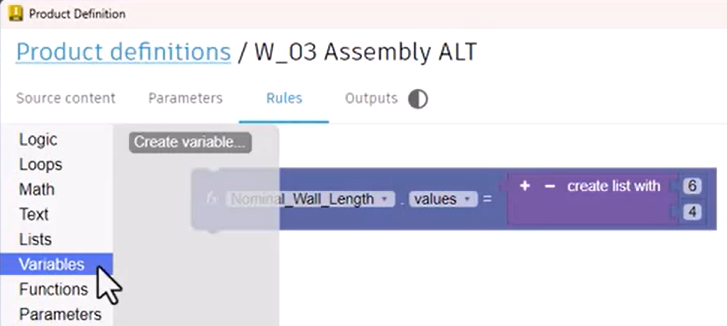
Now, import the file:
A message indicates that the rule contains one or more inputs that have not been adopted.

In the canvas, a message icon displays on the Nominal Wall Height block, indicating that it is the unadopted input.
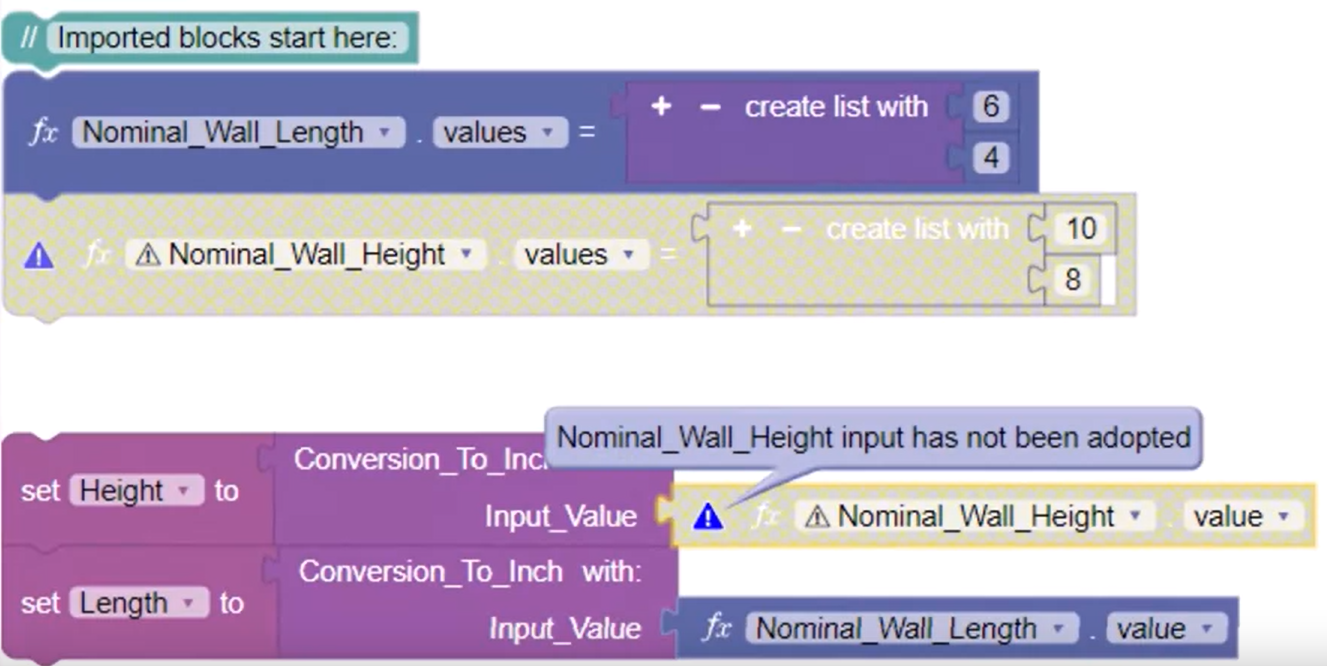
Check that the variables and functions imported properly:
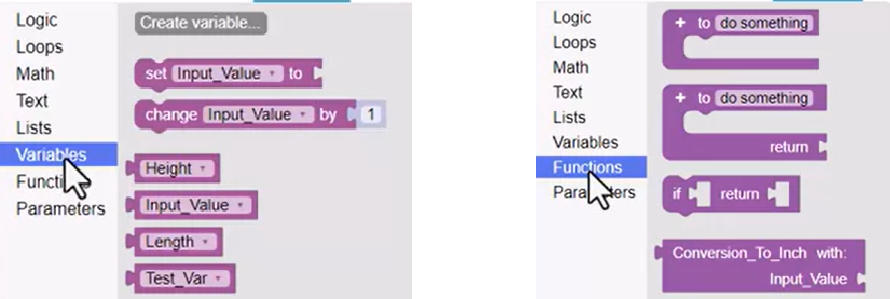
To resolve the issue with the unadopted parameter:

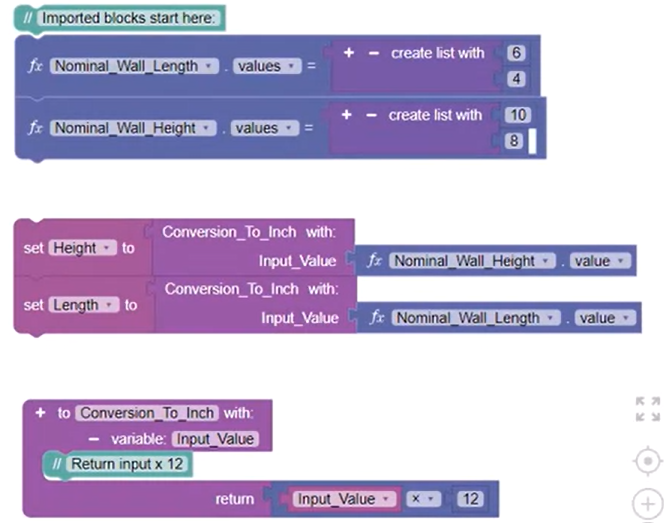
Next, blocks containing named variables and functions already in use are imported.
The variables and functions found to be present or in use are automatically given the same name plus a number, such as Height1 and Length1.
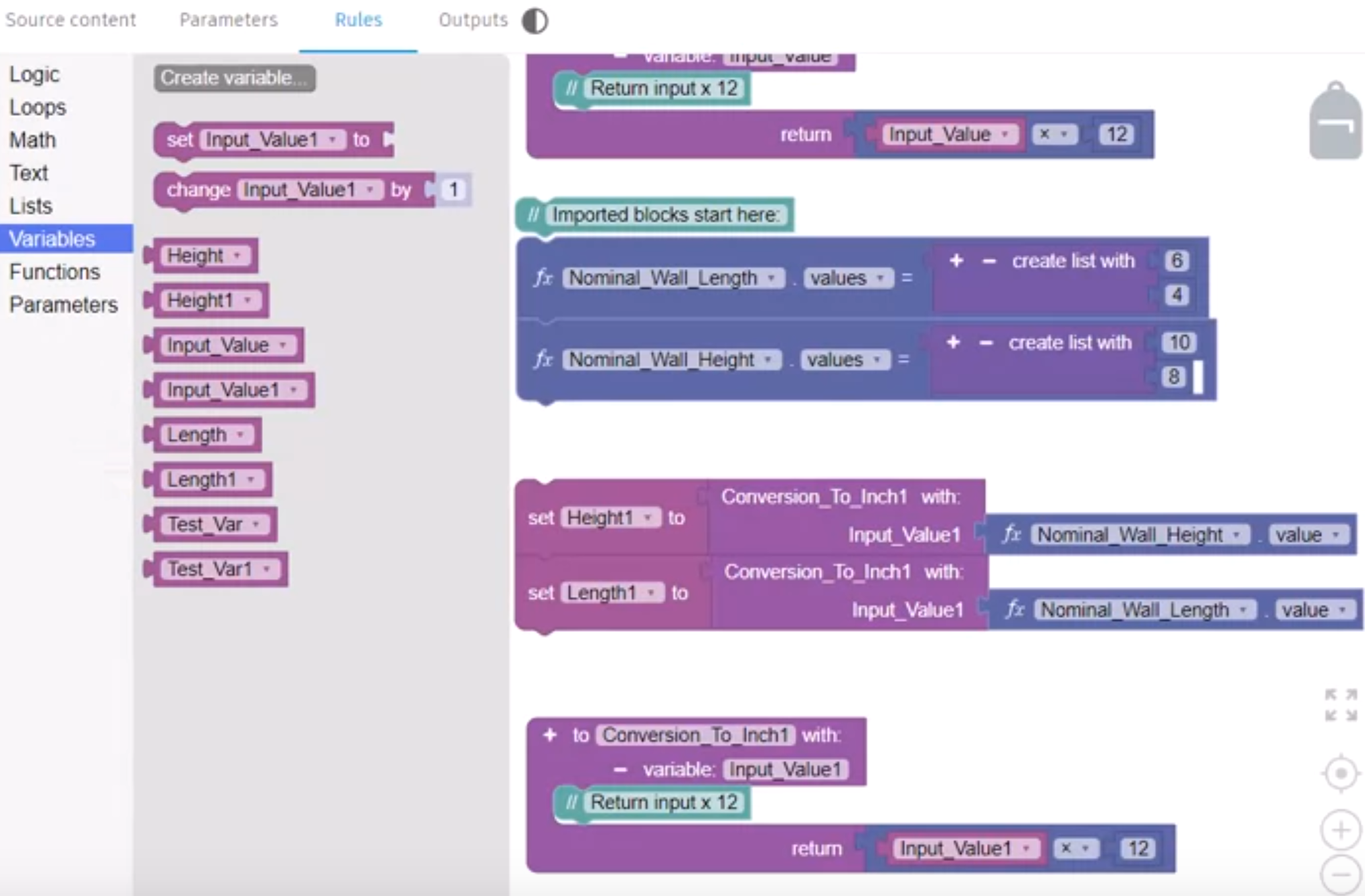
In summary, code block information can be exported and then imported between product definitions, enabling reuse across multiple projects. The code block information is saved as an IDC file. Once the code block information has been imported, an additional comment code block is added to assist in organization and tracking of imported rules.